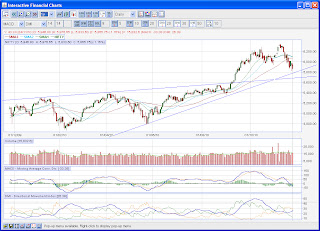This is another trend that’s catching up…more and more Indian companies are going abroad to raise debt.
[Note: Here, I’m attempting to just introduce this topic for arousing general interest, without getting much into the details, as I understand my readers may not be as well versed with the debt market dynamics as with the equity market. Over a period of time, I intend to introduce more in-depth and well-researched articles on debt markets – nevertheless, it's important to understand this to really understand the overall economy dynamics and even the equity markets !]
What is the International Debt Scenario ?
Just in this year alone, Indian companies have raised USD 10 bn of funds through sale of bonds…this figure is higher than the last 8 year put together !
Recently, after a gap of almost 13 years, Reliance (RIL) raised a debt of USD 1.5 bn internationally. Till date, ICICI Bank was the most active Indian corporate entity on this circuit, but off-late others have also decided to jump on the band-wagon. Axis Bank, SBI, IOC, Essar Energy, JSW Steel, GMR, Reliance Communications, IDBI Bank, Rural Electrification Corporation (REC), etc. are just some of the names who have either recently raised, or have concrete plans to raise international debt shortly.
Why raise debt?
If you are in need for funds (for expansion / acquisition / any other purpose), there are two ways of raising capital – either issue equity (sell stake to a Private Equity player / Strategic Investor OR issue an IPO / FPO and raise money through normal capital market route from retail investors) OR raise debt. Now, the big differentiator between equity and debt is, equity is tomorrow’s money, debt is today. Someone who is parting with equity to raise funds is parting with returns from future growth, while someone who is raising debt, believes the returns on debt will be good enough to pay the interest and still enhance overall shareholder value / enterprise valuation.
Why International debt?
This is an easy one…the interest rates outside India are much lower than that in India, so its cheaper to raise money outside, and pay, say, 7% interest per annum, rather than raise the debt in India and pay, say, 12% interest per annum. For example, a whole lost of money that Reliance is recently raised, will be used to retire the more costly debt, resulting in direct savings in quarterly interest payments and therefore, higher PBT (Profit Before Tax) – a figure that’s closely watched by all investors in the market during every quarterly result release.
Global Perspective
While its heartening to know that Indian corporates are reaching out internationally, but we’re still nowhere close as compared to our smaller peers…for example, this year India has seen some 12 international bond issues, while Korea has already done 69 ! For India to reach even that level, several things have to go right starting with improvement in India’s rating (and image) in the Global markets, enabling Indian corporates can raise debt at even lower rates. The bond offerings have to be more frequent so that its worth the while for bond portfolio managers to track India and some top Indian companies. Besides, the offerings have to be bigger in size – nobody’s going to track a whole economy or an industry and a company within that industry for a total bond offering sizing up to 100 mn dollars…besides, as the debt offering increases in size, the cost of raising that debt comes down proportionately (to some extent – I know I might be wrong here simply due to over-simplification).
You might want to go through this dated 2007 article briefing how bankers told companies not to go for international debt sales then !
And Finally, so what?
There are a lot of takeaways for the lay investor in this information itself…
· Dollars coming in into the system (not such miniscule (!) amounts as USD 10 bn) is likely to push rupee up, thereby making our exports less profitable (think Infosys)
· It also, to some extent, gives us a hint about the view of rupee in large corporate treasuries (responsible for raising such funds). If we can generalize these instances, (again, a risk of gross oversimplification) we can say that the rupee is seen as appreciating in the medium to longer term (If a Dollar is worth say, 45 INR today, and I have to pay 1 $ as interest, I pay only 45 bucks. But if tomorrow, Dollar becomes worth 55 INR, then also I have to pay 1$ interest, but in this case, I pay 55 rupees. And I’m earning in Rupees…Ouch !)
· I take this as a fairly bullish sign for these companies – that instead of diluting more equity, they are going for debt.
· Also, such debt results in a whole lot of new money coming in into the system, providing system with even more liquidity. This liquidity is later on going to be responsible for keeping further lending rate hikes in check…and probably even bring them down (however, for the effects to take place at such a scale, the debt borrowing has to be huge). So small and medium enterprises will be able to raise money domestically at relatively cheaper rates – resulting in their enhanced bottom-line.








